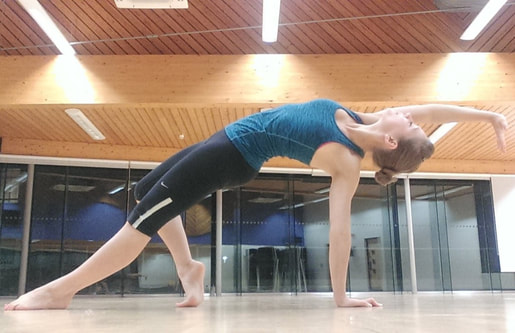ABOUT PILATES
|
Benefits of Pilates
Corrects poor posture and aligns the body Improves and develops core strength Brings back muscle balance Increases mobility and flexibility Relieves back pain and stiffness Helps with common orthopaedic conditions Helps recover from and prevents injuries Develops mind-body awareness Reduces stress Develops coordination and balance |
|
|
|
History of Pilates
Joseph Hubertus Pilates was born in Germany in 1880. He was a sickly child, growing up struggling with rickets, asthma and rheumatic fever. He was determined to overcome his health problems and so he studied human body and designed an exercise programme based on ancient Greek and Roman practices that helped him regain health.
In 1945, Pilates published his first book titled ‘Return to life through Contrology’ which described his 34 original exercises in a specific order, making up an intense programme for advanced clients such as ballet dancers.
Today Pilates is popular with general public and the exercises have been further developed, modified and adapted to reflect the latest trends and to suit all abilities. Pilates is used and endorsed by personal trainers, physiotherapists, osteopaths and other health professionals.
Foundation Principles of Pilates
Breath
It’s about lateral thoracic breathing that is breathing into the ribcage as the deep abdominal muscles are engaged. It’s very important, most efficient and tends to be difficult at first.
Concentration
It’s about concentrating fully on each movement that flows into another, blocking out all other thoughts, bringing body and mind together.
Centring
It’s about the ‘power house’ — each move comes from our core and every Pilates exercise is controlled by the contraction of deep abdominal muscles (some of which are transversus abdominis, lumbar multifidus, and pelvic floor). Centring is about strengthening those core muscles.
Precision
It’s about correct body alignment, which is crucial when exercising. Positioning of the body and following the right technique is key to high quality performance of the movements and in turn benefits of the exercises.
Flow
It’s about performing the exercises in a continuous flowing way and through controlled movement, going through concentric and eccentric phases, achieving balance and a functional training programme.
Control
It’s about execution of all the moves with complete control and with focus on quality instead of quantity, which reduces the risk of injury and helps balance out the weaker parts of the body by strengthening them. Control brings other Pilates principles together such as Concentration, Breath and Centring.
Joseph Hubertus Pilates was born in Germany in 1880. He was a sickly child, growing up struggling with rickets, asthma and rheumatic fever. He was determined to overcome his health problems and so he studied human body and designed an exercise programme based on ancient Greek and Roman practices that helped him regain health.
In 1945, Pilates published his first book titled ‘Return to life through Contrology’ which described his 34 original exercises in a specific order, making up an intense programme for advanced clients such as ballet dancers.
Today Pilates is popular with general public and the exercises have been further developed, modified and adapted to reflect the latest trends and to suit all abilities. Pilates is used and endorsed by personal trainers, physiotherapists, osteopaths and other health professionals.
Foundation Principles of Pilates
Breath
It’s about lateral thoracic breathing that is breathing into the ribcage as the deep abdominal muscles are engaged. It’s very important, most efficient and tends to be difficult at first.
Concentration
It’s about concentrating fully on each movement that flows into another, blocking out all other thoughts, bringing body and mind together.
Centring
It’s about the ‘power house’ — each move comes from our core and every Pilates exercise is controlled by the contraction of deep abdominal muscles (some of which are transversus abdominis, lumbar multifidus, and pelvic floor). Centring is about strengthening those core muscles.
Precision
It’s about correct body alignment, which is crucial when exercising. Positioning of the body and following the right technique is key to high quality performance of the movements and in turn benefits of the exercises.
Flow
It’s about performing the exercises in a continuous flowing way and through controlled movement, going through concentric and eccentric phases, achieving balance and a functional training programme.
Control
It’s about execution of all the moves with complete control and with focus on quality instead of quantity, which reduces the risk of injury and helps balance out the weaker parts of the body by strengthening them. Control brings other Pilates principles together such as Concentration, Breath and Centring.


